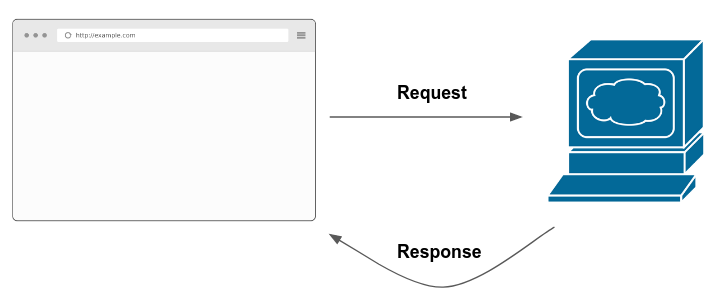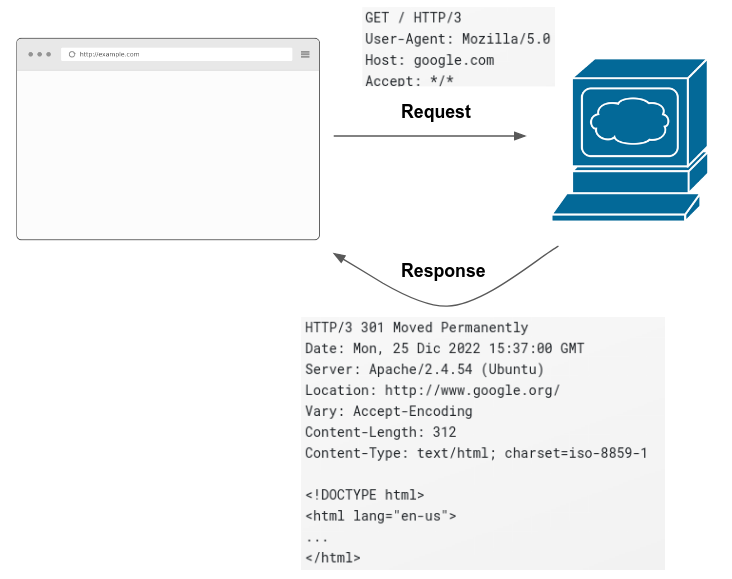A Dialogue Between Computers
Jorge Cimentada
A Dialogue Between Computers
Much is found about how to talk to APIs and the technical details of accessing API data. However, how do they work?
Let’s explain it with the analogy of cloud computing.
A Dialogue Between Computers
What does “moving” to the cloud mean?
“we’re moving our data to a computer hosted somewhere else in the world where professionals can take care of making backups of the data and if the computer breaks they can immediately launch a new computer with the backup copy of the data”.
Google/Microsoft services such as Word/Excel are just hosted on computers
No magic behind this: they are probably somewhere in a computer in the United States/Europe.
Servers are ON all the time
A Dialogue Between Computers
Doesn’t end there: every website in the world has a computer behind it that hosts the data and information showed in the website.
Yep, that’s right: type
www.google.comand there’s a machine behind it responding back in milliseconds.The browser prettifies the information and renders it for you.
This “dialogue” between your request and the server happens every time someone enters a website.
A Dialogue Between Computers

Anatomy of a Request
You’ve made over thousands of requests in your life without even knowing it.
When you use the browser, the browser makes the request for you.
When you webscrape, you make requests yourself.
read_htmlandread_xmldo these for you
Anatomy of a Request
How do the instructions of a request look like?
GET / HTTP/3
User-Agent: Mozilla/5.0 (X11; Ubuntu; Linux x86_64; rv:105.0) Gecko/20100101 Firefox/105.0
Host: google.com
Accept: */*The type of request you’re making (
GET /HTTP/3)The
User-Agent.This string describes the browser/computer that you’re using such that a website can identify you.The host: the website you are requesting data from.
The format that the request can accept: HTML, XML, JSON, etc..
*/*means the browser can accept any format.
Anatomy of a Request
As it is common for human interactions, a dialogue is between two parties. The computer/server responds back like this:
HTTP/3 301 Moved Permanently
Date: Mon, 25 Dic 2022 15:37:00 GMT
Server: Apache/2.4.54 (Ubuntu)
Location: http://www.google.org/
Vary: Accept-Encoding
Content-Length: 312
Content-Type: text/html; charset=iso-8859-1
<!DOCTYPE html>
<html lang="en-us">
…
</html>Anatomy of a Request
Full interaction

Types of requests
Most common request GET. Your browser makes thousands of this every week. However, there are many more:
GET: retrieves whatever information is identified by the URLPOST: requests data just asGETbut allows to enclose data in the ‘body’ of the request.HEAD: identical to GET except that the server MUST NOT return a message-body in the response.PUT: request that creates a new resource or replaces a resource on the serverDELETE: deletes a resource on the server
Example of POST
You enter a website that delivers food to your home.
Your browser sends
GETrequest to the servers behind the website and receives a reponse and renders the result.You spend about 15 minutes choosing which plate you’re gonna order.
Click on ‘submit order’.
You just sent
POSTrequest.
The POST request contains all the details of your order which are saved on the servers of the website and allow people at the kitchen start preparing your food.
Example of POST
POST /test / HTTP/3
Host: foo.example
Content-Type: application/x-www-form-urlencoded
Content-Length: 27
main_plate=poke_bowl&drinks=waterVery similar to
GET; only changes top lineContains a body, correctly structured to be accepted by the website
POSTis applied when an action can be repeated many times: ordering food, books, etc..PUTis the same but used for one-time things: updating currency (old one is removed)
REST APIs
Why is this all important? APIs work pretty much the same

REST APIs
Main difference: APIs are meant to share data
APIs are hosted on a server and organize data internally
Using the REST framework, it exposes this data to endpoints which are connected to different parts of the data organized
Endpoints can be accessed with
GET,POST, etc..Non-
GETexamples: log in to your Spotify account and usePOSTandDELETEto add/delete songs from your playlistExposes documentation layer for users to investigate each endpoint
Ethics in APIs
Excessive requests: servers have a finite amount of bandwidth they can use. Sleep your requests.
Read the terms of services: companies are sharing data freely over the web but this doesn’t mean you can do anything with it.
Authentication: many APIs require authentication. Make sure to do this every time it is needed